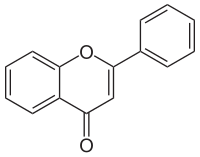
Photo from wikipedia
Abstract Although the intake of specific flavonoid-rich foods may reduce C-reactive protein (CRP) levels, the association between dietary flavonoid intakes and CRP is inconsistent. We aim to describe dietary flavonoid… Click to show full abstract
Abstract Although the intake of specific flavonoid-rich foods may reduce C-reactive protein (CRP) levels, the association between dietary flavonoid intakes and CRP is inconsistent. We aim to describe dietary flavonoid intakes in a Taiwanese nationally representative sample and to investigate the association between flavonoid intakes and CRP. We conducted a cross-sectional study based on 2592 adults from the Nutrition and Health Survey in Taiwan 2005–8. Flavonoid intakes were estimated by linking the 24-h dietary recall with the U.S. Department of Agriculture flavonoid database and divided into quartiles. Adjusted estimates of the flavonoid intakes for the continuous and binary (elevated CRP: >0⋅3 mg/dl) variables were performed by using general linear and logistic regression. We found that tea, orange, tofu and sweet potato leaves/water spinach constituted the major food items of the total flavonoid intake. The total flavonoid intake was lower among women and elderly. Compared with the lowest total flavonoid intake quartile, participants in higher quartiles were associated with a lower CRP status (adjusted odds ratio (OR): 0⋅61, 95 % confidence interval (CI): 0⋅44–0⋅86 for the highest quartiles). The trends were similar for flavonol and flavan-3-ol intakes. Compared with non-consumers, tea consumers were likely to have a lower CRP status (adjusted OR: 0⋅74, 95 % CI: 0⋅57–0⋅97). In brief, a higher total flavonoid intake and tea consumption were inversely associated with CRP levels, indicating that a high-flavonoid diet may contribute to anti-inflammatory effects. A Taiwanese flavonoid content table is necessary for conducting further studies related to flavonoids in Taiwan.
Journal Title: Journal of Nutritional Science
Year Published: 2021
Link to full text (if available)
Share on Social Media: Sign Up to like & get
recommendations!